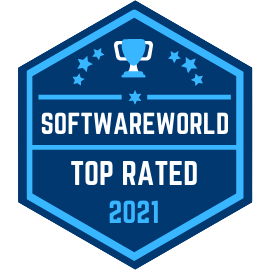You’ve made the decision to create a custom mobile app for your business. Now, you need to make the hard choices about what features to include in the build-out. When you begin the process, you will hear terms like MVP (minimum viable product), MSP (minimum sellable product), and MMP (minimum marketable product). Instead of worrying about these terms and what they mean, the important first step in creating custom mobile apps is to focus on your short-term and long term business needs to determine the best first step for your idea.
The MVP of Custom Mobile Apps
Your first phase will usually be to create the MVP. It will be a less expensive build and will allow you to build a user base before rolling out more expensive updates to create a more robust product. Your custom software partner will walk through a handful of key questions to help you clarify your business goals, user needs, the path to adoption, riskiest assumptions, and more to help you determine what features the initial phase (your MVP phase) should include.
While you may be tempted to put as many features as possible in this initial phase, it’s better to put fewer in the initial app offering in order to get it in the hands of your customers quickly. More features can be added in later stages of development when you have a better idea of how people are using the app and what features they are looking for from you. High-quality software will be built in a way that will allow you to add and enhance features down the road.
So what features DO you include in your MVP app release? Here are some questions to ask yourself when considering what to include:
- What value does this feature provide?
- How does this feature help solve a business or user problem?
- If that feature does or does not exist in the first version, how will that change the behavior of the people that will use the app?
- How much does the feature cost to implement?
These questions will help you narrow your focus on what features are most important to fulfilling your vision for the initial phase of your app rollout. By answering these questions about each one of the features you are considering, you will be able to compare and contrast them with similar metrics. By analyzing the cost as well, you will be able to ensure that your project comes in on budget.
The most important question to ask of any feature:
“If everything you have in phase 1 was complete except for this feature, would you hold off launching your app?”
If the answer to this question is yes, this feature belongs in phase one. If the answer is no, then this feature can be held until a later phase of development.
As for the features that don’t get included in the initial phase of development, your custom software company should have a process in place that will ensure that every feature gets rolled out in a way that makes the most sense. After determining the game plan for the MVP phase, you will work together on a planning process to narrow in on the short- and long-term vision for the software, culminating in creating a storymap. What is a storymap, you ask? A storymap is a tool that is used to list out all the potential features, group them into categories, and prioritize them into phases of work. This way, nothing is lost in the process of building your business’s ideal, custom mobile app.
Schedule a Free Consultation To Learn More
Want to learn more about the custom mobile app process or get more information about developing one for your organization? Sign up for a free consultation today!









